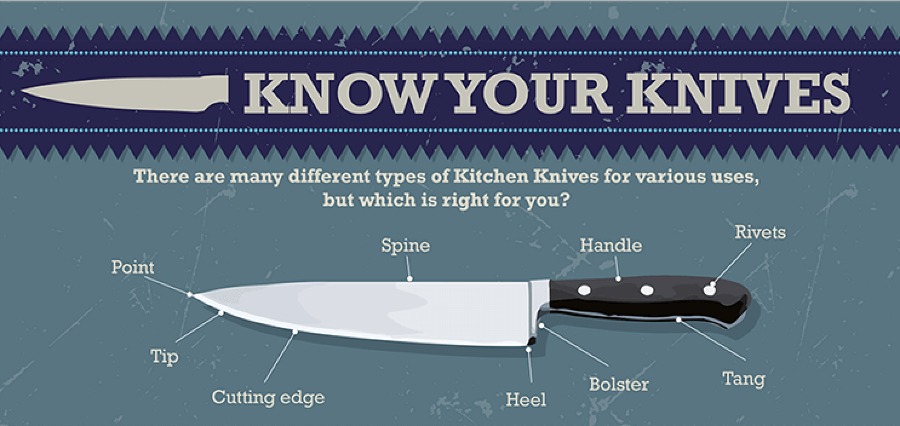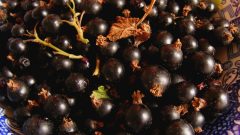Use This Detailed Knife Guide To Help You Become A Master In The Kitchen

The knife is as quintessential to cooking as fire is. From the most basic task, like slicing a lemon, to more intricate cuts requiring superior knife skills, there are more than 10 different types of common kitchen knives to aid you in such. So to help you, Reddit user Randomusefulbits shared this detailed knife guide to reference when deciphering which knife is best for the job at hand.
BLADE EDGES
It may seem simple, but the anatomy of a knife can tell you a great deal about what its primary use should be. The blade edge is an important place to start and this comprehensive knife guide shows the alternative cutting edges on each knife. The most common are straight, serrated, and granton blades.

Straight blades are usually the sharpest, and are perfect for slicing fish, chopping vegetables, and cutting raw meat.
When cutting foods with a hard exterior yes a soft interior, like pineapple, watermelon, or bread, it’s best to use a serrated blade.
Granton-style blades have shallow grooves along the cutting edge, and are designed to cut through moist items. These oval shaped grooves help prevent the blade from sticking.
KNIFE TYPES
Now that you’ve got your cutting edge selected, it’s time to pick a knife. Some common, everyday knives include the pairing knife, a turning knife, and a boning knife.

A pairing knife is a small, yet sharp kitchen tool that is great for tedious tasks like peeling potatoes, and coring items.
The turning knife sports a short curved blade, with a longer handle. Turning knifes are ideal for peeling fruits and vegetables, but the curved blade allows for a bit of style in each cut.
When removing meat from the bone, a boning knife is a recommended choice. Equipped with a slight curve, boning knives are a great tool to incorporate when dealing with fish or poultry.
For large jobs, use a large knife. Here’s where the use of a filleting knife, a utility knife, or Chinese cleaver will come in handy.

The filleting knife has a long, skinny blade and a sharp cutting edge. There’s a bit of flexibility in the blade which makes it ideal for delicate tasks, like removing skin from the meat or filleting a fish.
The highly versatile utility knife is a strong, powerful knife. Use the utility knife when you’re chopping small cuts of meat and vegetables.
The Chinese chopper — also known as a Chinese cleaver — is similar to a cleaver, but is not ideal for cutting through bones. Use the Chinese chopper for large cuts of meat.
When butchering meat, the cleaver, Santoku knife, and Chef’s knife are the most ideal choices.

Identified by its rectangular blade, and thick cutting edge, the cleaver is exceptionally useful when splitting large cuts of beef or spare ribs.
The Santoku knife is a great choice for chopping or mincing meat or vegetables. A true santoku will have a Granton edge, which will prevent moist food from sticking to it, making it useful to scoop chopped bits of food.
The ever versatile Chef’s Knife has a weighted blade that makes it easier to rock back and forth while chopping. If there’s one knife in your kitchen, make sure it’s this one.
Even if you’re just making a turkey sandwich for lunch, a bread knife, a palette knife and a carving knife will help make clean precise cuts.

A bread knife has a sharp serrated edge that will slice through a loaf of bread without tearing. The bread knife is also an ideal knife to use when slicing tomatoes.
A palette knife, is not sharp but will allow you to lift and slide between items. It’s a good tool to use when cooking on a skillet.
Lastly, a carving knife is perfect for cutting those paper thin slices of turkey, ham, or beef that we all know and love.
Using what we’ve learned from this detailed knife guide should help shape the understanding of the capabilities of all the different cutting options available to us. There’s definitely plenty of knives to choose from, but this should help even the most amateur chefs cut skillfully and gracefully.






















